Unveiling Sanfang Qixiang: The Hidden Gem of Fuzhou You Can’t Miss

An Essential Guide to Visiting Sanfang Qixiang
Nestled in the heart of Fuzhou, Sanfang Qixiang, or the Three Lanes and Seven Alleys, beckons travelers with its enchanting blend of history, culture, and architecture. This sprawling historic district is a treasure trove of over 200 well-preserved buildings from the Ming and Qing Dynasties, making it the largest intact urban area of its kind in China. As you wander through the labyrinthine streets, you’ll find yourself stepping back in time, exploring the former residences of influential figures who played pivotal roles in shaping modern China.
The unique “fishbone” layout of the district, with its three prominent lanes and seven quaint alleys, invites visitors to uncover stories of ancient merchants, scholars, and artisans who once thrived here. Each corner reveals a new facet of traditional Chinese life, from the ornate woodwork of ancestral homes to the vibrant local markets that pulse with contemporary energy.
Sanfang Qixiang is not just a museum of the past; it’s a living, breathing community where the echoes of history resonate through lively shops, quaint teahouses, and cultural performances. Whether you’re a history buff, an architecture enthusiast, or simply seeking an authentic glimpse into Chinese culture, this destination promises to captivate your senses and leave you with unforgettable memories. Join us as we delve into the essential guide to experiencing all that Sanfang Qixiang has to offer, ensuring your visit is both enriching and enjoyable.
In This Guide
- An Essential Guide to Visiting Sanfang Qixiang
- The Rich History and Legends of Sanfang Qixiang
- Main Highlights: What You Absolutely Can’t Miss
- Planning Your Visit: A Practical Guide
- Tickets: Prices, Booking, and Tips
- How to Get There: A Complete Transportation Guide
- Local Cuisine and Accommodation Nearby
- Frequently Asked Questions
- Final Thoughts on Your Trip
The Rich History and Legends of Sanfang Qixiang
Nestled in the heart of Fuzhou, Sanfang Qixiang, or the “Three Lanes and Seven Alleys,” is a vibrant tapestry woven from over a millennium of history. This historic district, recognized as a UNESCO World Heritage Tentative List site, is not merely a collection of ancient buildings; it is a living museum that encapsulates the cultural and architectural heritage of China.
The origins of Sanfang Qixiang date back to the Tang Dynasty (618-907 AD), a period marked by significant cultural and economic prosperity. The layout of the district reflects the traditional Lifang system of urban planning, a concept that organized residential areas around communal spaces, promoting both social interaction and accessibility. This design has remained remarkably consistent over the centuries, with the fishbone street pattern still evident today.
As you wander through its charming lanes, you’ll encounter over 200 well-preserved structures from the Ming (1368-1644) and Qing (1644-1912) Dynasties. These buildings are not just architectural marvels; they served as homes to influential figures in Chinese history. Among them are scholars, poets, and government officials whose contributions have shaped modern China. The area was often referred to as the “Beverly Hills of Imperial China,” a testament to its historical significance and the prestige of its residents.
Each lane and alley within Sanfang Qixiang tells its own story. Yijin Lane, known as “Brocade Lane,” was once the abode of high-ranking officials, while Wenru Lane, or “Scholar Lane,” was home to many of China’s greatest thinkers and literary figures. Guanglu Lane, with its stunning Liu Courtyard, echoes tales of the Qing Dynasty’s opulence and artistry. The Seven Alleys, with names like “Tower Alley” and “Palace Alley,” further enrich this historical narrative, offering glimpses into the lives of those who walked these paths centuries ago.
The legends that permeate Sanfang Qixiang are as captivating as its architecture. One popular tale recounts the life of a renowned scholar who, after achieving great success in the imperial examinations, returned to his roots in Fuzhou to mentor local youths. His spirit of education and community continues to inspire current generations, embodying the essence of the district’s historical significance.
Moreover, the district served as a critical hub along the Maritime Silk Road, facilitating trade and cultural exchange between China and the rest of the world. The Maritime Silk Road Exhibition Hall, located within the district, showcases this rich maritime heritage through ship models and exhibits that connect visitors to the stories of seafaring merchants and explorers who once navigated these routes.
Today, Sanfang Qixiang is not just a relic of the past; it is a dynamic cultural center where history and modernity coexist. The district pulses with life, drawing locals and international travelers alike who come to savor its traditional cuisine, witness live performances of Min Opera, and immerse themselves in the rich tapestry of Fujian culture.
As you explore the winding lanes and alleys, you’ll find that Sanfang Qixiang is more than just a destination; it is a journey through time, where every corner reveals a new chapter in China’s illustrious history.
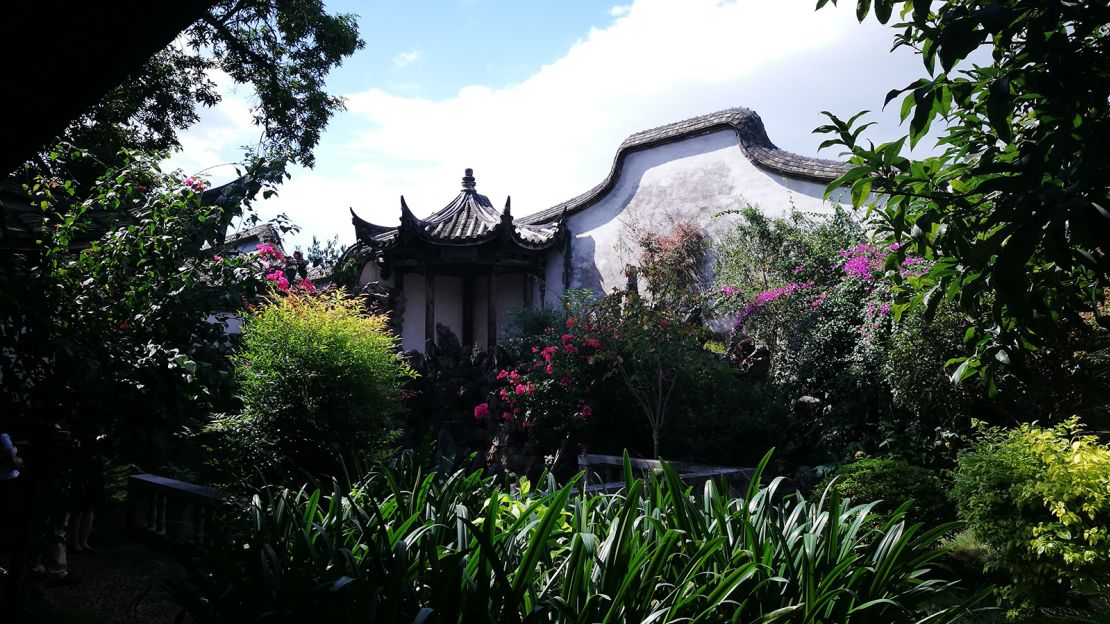
Sanfang Qixiang.
Main Highlights: What You Absolutely Can’t Miss
When exploring Sanfang Qixiang (Three Lanes and Seven Alleys), you’ll find yourself immersed in the rich tapestry of Chinese history and culture. This historic district, a UNESCO World Heritage Tentative List site, is a living museum filled with architectural treasures and cultural experiences. Here are the main highlights you absolutely can’t miss during your visit:
1. The Three Lanes
The western side of Sanfang Qixiang features three prominent lanes, each with its own unique character:
-
Yijin Lane (衣锦坊): Known as “Brocade Lane,” this area was once home to high-ranking officials. Stroll through its charming surroundings and imagine the stories of those who lived here.
-
Wenru Lane (文儒坊): This lane, or “Scholar Lane,” was frequented by generals, scholars, and poets. It’s a great spot to soak in the intellectual spirit of ancient China.
-
Guanglu Lane (光禄坊): Home to the famous Liu Courtyard, this area showcases exquisite architecture and provides insight into the lives of the wealthy during the Qing Dynasty.
2. The Seven Alleys
On the eastern side, the Seven Alleys offer a more intimate glimpse into traditional life:
-
Yangqiao Alley (杨桥路): A picturesque alley that reflects the essence of local living.
-
Langguan Alley (郎官巷): Known for its tranquil charm, perfect for leisurely exploration.
-
Ta Alley (塔巷): Named “Tower Alley,” this narrow passage is steeped in history.
-
Huang Alley (黄巷), Anmin Alley (安民巷), Gong Alley (宫巷), and Jibi Alley (吉庇路) each bring their own stories, showcasing the evolution of urban life in Fuzhou over the centuries.
3. Nanhou Street (南后街)
This vibrant commercial corridor serves as the central axis of Sanfang Qixiang, connecting the three lanes and seven alleys. Here, you can find a mix of traditional shops, local snacks, and unique souvenirs. It’s the perfect place to experience the lively atmosphere and interact with local vendors.
4. Water Pavilion Theater (水榭戏台)
Don’t miss this 400-year-old architectural gem, Fuzhou’s only remaining water pavilion stage. Built during the Ming Dynasty, it offers stunning acoustics and hosts regular performances of Min Opera, Chou Singing, and traditional music. Enjoy the intricate roof carvings as you immerse yourself in this cultural experience that once entertained Ming-era elites.
5. Maritime Silk Road Exhibition Hall (海上丝绸之路展示馆)
Located in Wenru Lane, this exhibition hall is housed in a beautifully preserved Qing Dynasty residence. It showcases Fuzhou’s significant maritime heritage, featuring ship models and artifacts that illustrate the city’s historical connection to the Maritime Silk Road. The drawing room offers a glimpse into Qing Dynasty residential life, making it a must-visit for history enthusiasts.
6. Architectural Wonders
Throughout Sanfang Qixiang, you’ll encounter over 200 preserved buildings from the Ming and Qing Dynasties. These structures not only display exquisite craftsmanship but also tell the tales of the influential figures who once resided here. Take your time to admire the intricate details and unique styles that define traditional Chinese architecture.
7. Cultural Experiences
As you wander through the alleys, keep an eye out for cultural performances, art exhibitions, and local food vendors. The district regularly hosts events that highlight Fujian culture and traditions, providing an authentic taste of local life.
Final Thoughts
Sanfang Qixiang is more than just a historic site; it’s a vibrant cultural hub that bridges the past and present. Whether you’re captivated by the stunning architecture, intrigued by the tales of historical figures, or simply looking to enjoy local delicacies, this remarkable district promises an unforgettable experience for every traveler. Don’t forget your camera, as every corner is a picture-perfect moment waiting to be captured!
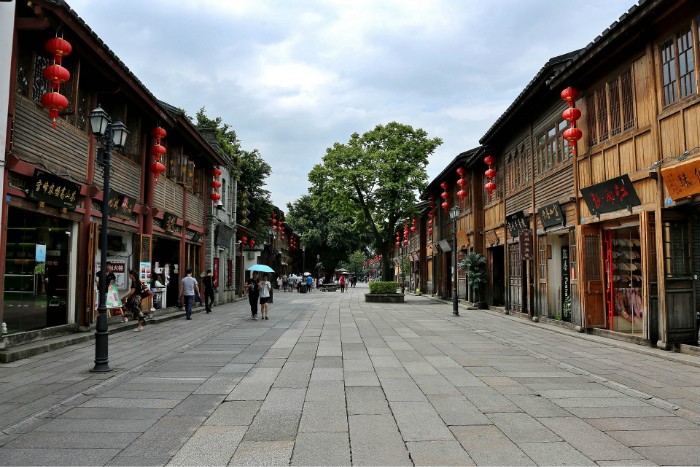
Sanfang Qixiang.
Planning Your Visit: A Practical Guide
Planning Your Visit: A Practical Guide to Sanfang Qixiang
Visiting Sanfang Qixiang, also known as the Three Lanes and Seven Alleys, is a journey into the heart of China’s rich cultural and historical tapestry. Here’s everything you need to know to make the most of your visit to this remarkable historic district in Fuzhou.
Getting There
Location:
Sanfang Qixiang is centrally located in Gulou District, Fuzhou, Fujian Province. The main entrance is on Nanhou Street, easily accessible by public transport or taxi.
Public Transport:
– Bus: Numerous bus lines service the area. Check local schedules for routes that go to Nanhou Street.
– Metro: The nearest metro station is Fuzhou Railway Station; from there, you can take a short taxi ride or a local bus to reach Sanfang Qixiang.
– Taxi/Rideshare: Taxis are a convenient option, especially for international travelers. Ensure that the driver understands your destination; showing them the address in Chinese can be helpful.
Best Time to Visit
Opening Hours:
Sanfang Qixiang is open all day, allowing visitors to explore at their own pace.
Recommended Duration:
Plan to spend between 1.5 to 3 hours here. This will give you ample time to wander through the lanes, visit exhibits, and enjoy local delicacies.
Ideal Seasons:
The district is a year-round attraction, but spring (March to May) and autumn (September to November) offer pleasant weather, making it ideal for leisurely strolls.
What to See and Do
Explore the Lanes and Alleys:
– Three Lanes: Stroll through Yijin Lane, Wenru Lane, and Guanglu Lane, each offering a glimpse into the lives of historical figures and the architecture of the Ming and Qing Dynasties.
– Seven Alleys: Discover the charm of Yangqiao Alley, Ta Alley, and others, each with unique stories and architectural styles.
Cultural Experiences:
– Water Pavilion Theater: Don’t miss this 400-year-old theater where you can watch live performances of Min Opera and other traditional arts.
– Maritime Silk Road Exhibition Hall: Learn about Fuzhou’s maritime heritage and its significance in ancient trade routes.
Local Cuisine:
Sanfang Qixiang is an excellent place to indulge in Fujian’s culinary delights. Try the local snack specialties like:
– Buddha Jumps Over the Wall – a famous Fuzhou dish.
– Fish Balls – a local favorite, often served in soup.
Practical Tips
- Entry Fee: Admission to Sanfang Qixiang is free, making it an affordable cultural excursion.
- Dress Comfortably: Wear comfortable shoes as you’ll be doing plenty of walking on cobblestone streets.
- Stay Hydrated: Bring water, especially during the hotter months, as you may be walking for extended periods.
- Photography: Capture the beauty of the architecture and the vibrant street life, but be respectful of residents and their homes.
Useful Information
- Language: While Mandarin is the primary language, you may encounter some English speakers, particularly in tourist areas. A translation app can be handy.
- Wi-Fi Access: Free public Wi-Fi may be available in some areas, but consider securing a local SIM card for better connectivity.
- Restrooms: Public restrooms are available, but they may not always be up to Western standards; carry hand sanitizer for convenience.
Final Thoughts
Sanfang Qixiang is not just a historical site; it’s a vibrant community that offers a glimpse into the essence of Fuzhou and the broader Chinese culture. Whether you’re an architecture enthusiast, a history buff, or simply looking to enjoy local food and art, this ancient district is a must-visit. Enjoy your exploration of this enchanting corner of China!
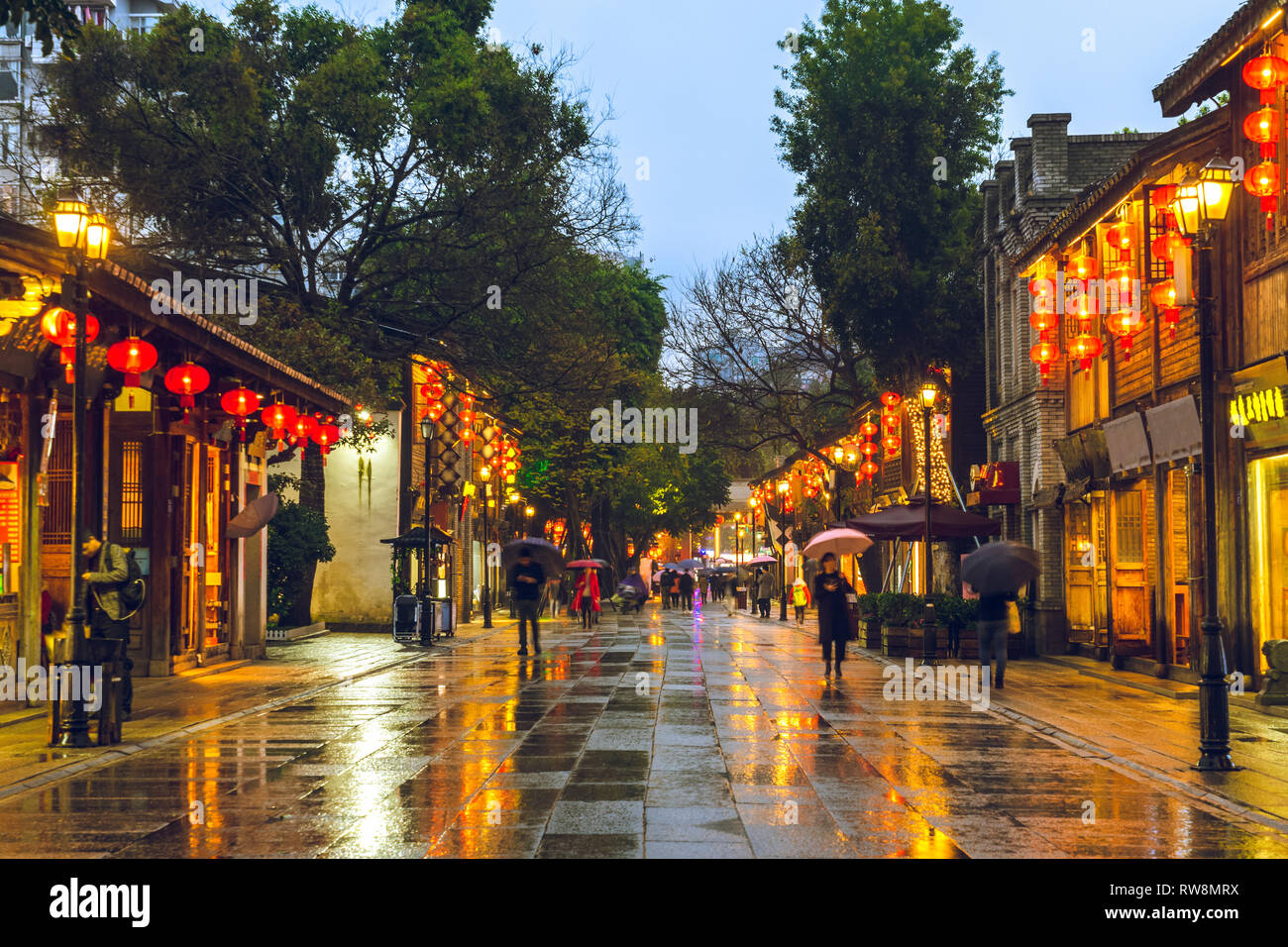
Sanfang Qixiang.
Tickets: Prices, Booking, and Tips
When planning your visit to Sanfang Qixiang (三坊七巷), you’ll be pleased to know that entry to this remarkable historical district is completely free! This makes it an accessible destination for international travelers eager to explore one of China’s most significant cultural heritage sites without the burden of ticket costs.
Tips for Your Visit
-
Recommended Duration: Allocate about 1.5 to 3 hours to fully immerse yourself in the sights and sounds of this unique area. This will give you enough time to stroll through the ancient lanes, visit the notable residences, and soak in the vibrant atmosphere.
-
Best Time to Visit: Sanfang Qixiang is a year-round attraction. However, the spring and autumn months offer milder weather, making your exploration more enjoyable. Avoiding the peak summer heat can also enhance your experience.
-
Opening Hours: The district is open all day, allowing you to visit at your leisure. Early morning or late afternoon are great times to wander through the alleys when the light casts a beautiful glow on the historic architecture.
-
Guided Tours: While entry is free, consider joining a guided tour for a deeper understanding of the area’s rich history and architecture. Many local guides offer engaging insights that bring the past to life.
-
Accessibility: Sanfang Qixiang is located in the heart of Fuzhou, making it easily accessible by public transport. Be sure to wear comfortable shoes, as you’ll want to wander the narrow lanes and explore at your own pace.
-
Cultural Etiquette: Respect the local customs and the sanctity of historical sites. Photography is generally welcome, but be mindful of signs indicating where it may be restricted.
Conclusion
With no admission fee and countless opportunities for cultural exploration, a visit to Sanfang Qixiang promises a rewarding experience. So lace up your walking shoes, bring your curiosity, and prepare to step into the rich tapestry of Fuzhou’s history!
How to Get There: A Complete Transportation Guide
Reaching Sanfang Qixiang (三坊七巷) is an adventure in itself, reflecting the charm and vibrancy of Fuzhou. This historic district, located in the heart of Fuzhou, can be accessed through various transportation options, making it convenient for international travelers. Below is a comprehensive guide to help you navigate your way to this cultural gem.
By Air
Fuzhou Changle International Airport (FOC) is the main airport serving the city. It offers numerous domestic and international flights. Upon arrival at the airport, you have several options to reach Sanfang Qixiang:
-
Taxi: The most straightforward option is to take a taxi from the airport. The journey to Sanfang Qixiang takes approximately 45 minutes, depending on traffic. Make sure to have the address written in Chinese (南后街, 鼓楼区) to show the driver.
-
Airport Shuttle: Alternatively, you can take an airport shuttle bus to downtown Fuzhou. Look for the shuttle bus that heads towards the city center and alight at a stop close to Gulou District. From there, a short taxi ride or a 20-minute walk will get you to Sanfang Qixiang.
By Train
Fuzhou is well connected by rail to major cities in China. If you’re traveling from places like Shanghai, Xiamen, or Beijing, consider taking a high-speed train to Fuzhou Railway Station or Fuzhou South Railway Station.
-
From Fuzhou Railway Station: Upon arrival, you can take a taxi or a local bus to Sanfang Qixiang. A taxi ride will take about 15 minutes, while local buses are available for a more economical option.
-
From Fuzhou South Railway Station: This station is further from the city center. You will need to take a taxi, which could take around 30 minutes to reach Sanfang Qixiang.
By Bus
Local buses are an efficient and budget-friendly way to explore Fuzhou. Multiple bus lines operate within the city, and many routes pass through or near Sanfang Qixiang.
- Popular Bus Lines: Look for buses numbered 1, 7, 12, 19, or 22, which stop at or near Nanhou Street. Make sure to check the bus schedules, as they can vary.
By Metro
Fuzhou’s metro system is expanding, making it a convenient option for getting around the city.
- Metro Line 1: Take the metro to Zhongshan Road Station (中山路站). From there, it’s about a 15-minute walk to Sanfang Qixiang. Follow signs to Nanhou Street, which will lead you directly to the district.
By Bicycle or Walking
If you’re already in downtown Fuzhou, consider renting a bicycle or simply walking to Sanfang Qixiang. The district is pedestrian-friendly, and cycling through the streets allows you to soak in the local atmosphere and architecture along the way.
Final Tip
Regardless of your chosen mode of transport, it’s advisable to download a translation app or have the address for Sanfang Qixiang handy in Chinese. The locals are generally friendly and willing to help if you need directions.
With this transportation guide, navigating your way to Sanfang Qixiang will be a seamless part of your journey, allowing you to dive into the rich history and culture that awaits in this remarkable area of Fuzhou. Enjoy your visit!
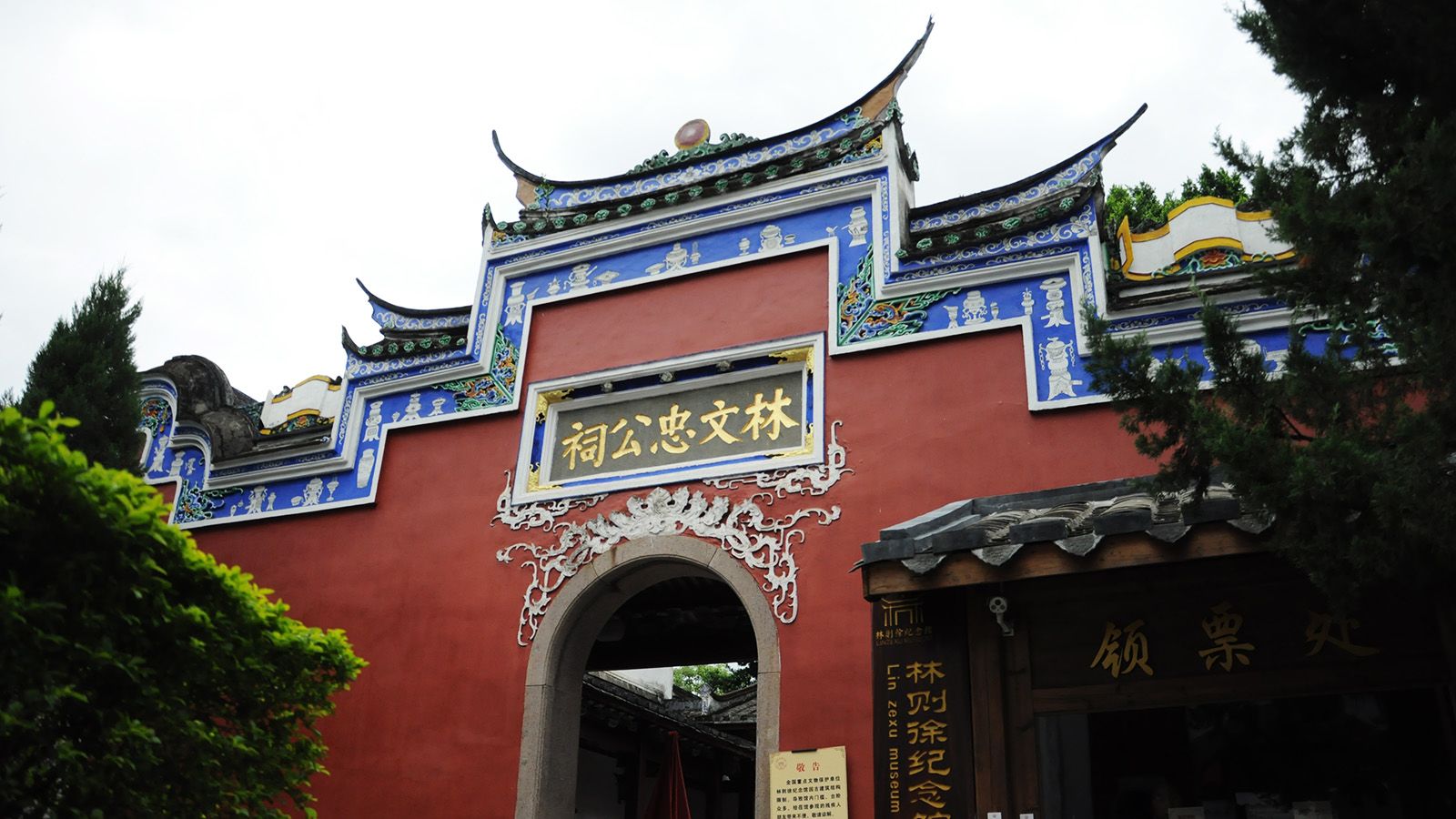
Sanfang Qixiang.
Local Cuisine and Accommodation Nearby
Exploring the rich cultural tapestry of Sanfang Qixiang (Three Lanes and Seven Alleys) is bound to work up an appetite, and fortunately, the area is brimming with delightful culinary options and charming accommodations to enhance your experience.
Culinary Delights
- Fuzhou Fish Balls (福州鱼丸)
- Location: Various street vendors throughout Sanfang Qixiang
-
These soft, bouncy fish balls are a local specialty, made from fresh fish paste and often served in a savory broth. Make sure to try them from the bustling street stalls that dot Nanhou Street for an authentic taste of Fuzhou.
-
Buddha Jumps Over the Wall (佛跳墙)
- Location: Wangfujing Restaurant (王府井大饭店)
-
This iconic Fuzhou dish is a luxurious seafood stew made with various ingredients, including shark fin, sea cucumber, and abalone. Enjoy this delicacy in a restaurant that captures the essence of traditional dining.
-
Dumplings (饺子)
- Location: Chaozhou Dumpling Shop (潮州饺子店)
-
Fuzhou dumplings are renowned for their delicate wrappers and flavorful fillings. This shop, located just a short walk from Sanfang Qixiang, offers a variety of dumplings, making it a perfect stop for a quick bite.
-
Min Cuisine (闽菜)
- Location: Min Cuisine Restaurant (闽味餐厅)
- For a more sit-down experience, head to this restaurant specializing in Min cuisine, which features a mix of sweet, sour, and savory flavors. Try their signature dishes like braised pork and stir-fried vegetables, all prepared with local ingredients.
Comfortable Stays
- Fuzhou Duyun Hotel (福州都云酒店)
- Location: Close to Sanfang Qixiang
-
This modern hotel offers a comfortable stay with easy access to the historic district. Guests can enjoy well-appointed rooms and a selection of dining options, making it a convenient base for exploring Fuzhou.
-
Gulou Hotel (鼓楼大酒店)
- Location: Near the city center
-
A few minutes’ walk from Sanfang Qixiang, Gulou Hotel features traditional Chinese decor and modern amenities. After a day of sightseeing, unwind in their cozy lounge or enjoy authentic local dishes in their restaurant.
-
The Westin Fuzhou Minjiang (福州万怡酒店)
- Location: A short drive from Sanfang Qixiang
-
For those seeking luxury, The Westin offers stunning river views and upscale accommodations. Their spa and wellness facilities are perfect for relaxing after a day of exploring the vibrant streets of Fuzhou.
-
Hostel 88 (88旅舍)
- Location: Just a 10-minute walk from the historic area
- If you’re traveling on a budget, Hostel 88 is a great option. This cozy, friendly hostel offers dormitory-style and private rooms, providing a communal atmosphere perfect for meeting fellow travelers.
Whether you’re indulging in local delicacies or resting in comfortable accommodations, the area surrounding Sanfang Qixiang ensures an unforgettable visit that captures the essence of Fuzhou’s rich cultural heritage.
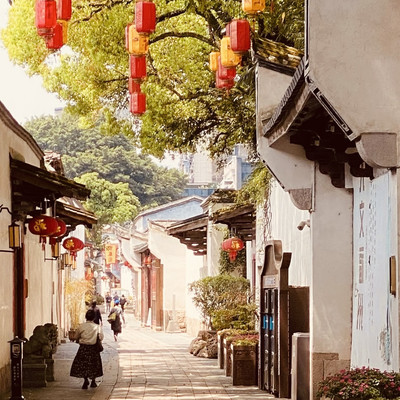
Sanfang Qixiang.
Frequently Asked Questions
Frequently Asked Questions about Sanfang Qixiang
-
What is Sanfang Qixiang and why should I visit?
Sanfang Qixiang, or Three Lanes and Seven Alleys, is the largest preserved historic urban district in China, showcasing over 200 ancient buildings from the Ming and Qing Dynasties. It offers visitors an authentic glimpse into over 1,000 years of Chinese culture and heritage, making it a must-see for anyone interested in history, architecture, and traditional urban life. -
What are the opening hours for Sanfang Qixiang?
The district is open all day, allowing visitors the flexibility to explore at their own pace. Whether you prefer a leisurely morning stroll or an evening exploration, you can enjoy the beauty of this historic area whenever it suits you. -
Is there an entry fee to visit Sanfang Qixiang?
No, entry to Sanfang Qixiang is free, making it an accessible destination for travelers. You can wander through the picturesque lanes and alleys without worrying about ticket costs. -
How much time should I plan to spend there?
It is recommended to allocate between 1.5 to 3 hours for your visit. This should give you enough time to explore the alleys, take in the architecture, and perhaps enjoy some local delicacies. -
What are some must-visit attractions within Sanfang Qixiang?
Don’t miss the Water Pavilion Theater, a 400-year-old architectural gem known for its fantastic acoustics and Min Opera performances. Additionally, the Maritime Silk Road Exhibition Hall provides insight into Fuzhou’s maritime heritage, showcasing ship models in a beautifully preserved Qing Dynasty residence. -
What is the best time of year to visit Sanfang Qixiang?
Sanfang Qixiang can be visited year-round, but spring (March to May) and autumn (September to November) are particularly pleasant, with mild weather ideal for walking and exploring. -
How do I get to Sanfang Qixiang from central Fuzhou?
Sanfang Qixiang is conveniently located in the Gulou District of Fuzhou. You can easily reach it by taxi or public transportation. Many visitors opt for a short walk from nearby attractions, as it is centrally situated. -
Are there any dining options available within Sanfang Qixiang?
Yes, the area is filled with local eateries and tea houses where you can sample authentic Fujian cuisine. Be sure to try local specialties like Fuzhou fish balls and fried rice noodles, making your visit a delightful culinary experience as well!
Final Thoughts on Your Trip
As you prepare to leave the enchanting streets of Sanfang Qixiang, take a moment to reflect on the rich tapestry of history and culture you’ve just experienced. This remarkable district, with its well-preserved Ming and Qing architecture, serves as a living testament to over a millennium of Chinese heritage. The harmonious blend of bustling markets, tranquil alleys, and cultural performances creates a unique atmosphere that transports you back in time.
Whether you wandered through the elegant lanes of Yijin and Wenru or paused to soak in the captivating performances at the Water Pavilion Theater, each step within this historic enclave offers a glimpse into the lives of those who shaped Fuzhou and, by extension, modern China. As you leave, carry with you not just souvenirs, but stories of the influential figures who once roamed these streets and the traditions that continue to thrive here.
Sanfang Qixiang is more than a destination; it’s an invitation to explore, learn, and connect with the cultural roots of a city that has gracefully embraced both its past and future. So, until your next adventure, let the memories of this ancient urban treasure inspire your journey through the wonders of the world. Safe travels!